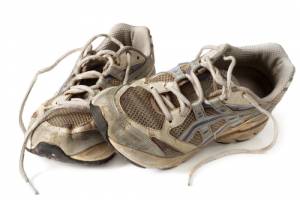The Federal Correctional Institution, Bastrop (better known in central Texas as FCI Bastrop) is a low-security prison 30 miles southeast of Austin. It houses about 800 male inmates, most of whom are there for drug offenses and white-collar crimes. FCI Bastrop is not your Sing-Sing and your Attica in New York, your Alcatraz, your San Quentin and your Folsom in California, your Joliet in Illinois, your Angola in Louisiana or your Parchman in Mississippi. It’s not your Supermax in Colorado, either. Texas has numerous prisons that are far tougher; Huntsville, Polunsky, Livingston and Reeves County are notorious for gang-bangers and violence against guards and among inmates. FCI Bastrop, which opened in 1979, is by contrast a country club. A man can serve his sentence there in some degree of civilization. The fact remains, however—it is a prison. If you run, they bring out the dogs and rifles. And if they catch you, as they almost surely will, you won’t be coming back to FCI Bastrop. Hello, Huntsville!
Ex-Cowboy now doing hard time
The most famous inmate at FCI Bastrop currently is Sam Hurd, the former Dallas Cowboys and Chicago Bears wide receiver who was busted for trafficking large amounts of marijuana and cocaine. Convicted in 2013, he is serving a 15-year sentence.
In the late 1980s, I wrote a weekly column about running and racing in the sports section of the Austin American-Statesman. I was on a never-ending search for topics, and by the time I quit I was more exhausted than in mile 26 of any marathon I ever ran. One column, which pertained to the aforementioned lockup, took considerable planning and effort. Forgive me, but with the passage of nearly 30 years I cannot remember all of the details. I sought and received permission from the authorities at FCI Bastrop to visit and hold a series of informal races. Then I went to Rooster Andrews Sporting Goods, Run-Tex and Academy, and secured agreements about donation of running shoes. My next step was to enlist the help of a friend, John Ferguson. He had plenty of experience in putting on 5Ks and 10Ks in and around Austin. John offered to bring along a large digital clock, a start/finish banner and a few other things needed to stage this rather unique event.
Finally, the day arrived. John and I drove there, unloaded a big wooden box and went in. Of course, they were expecting us. I am almost certain that we had already given them our basic information so that background checks could be done. Neither of us had a criminal record—I was neither caught nor charged for those axe murders I am alleged to have committed back in 1974 (I’ve got an airtight alibi)—so we had advance approval.
Then came the big “oh, no” moment. The box John had brought was opened for inspection, and what was sitting on top but a starter gun.
 I wonder when pistols were first used at the beginning of races featuring horses or humans. In the 18th century? Maybe even earlier. It’s a traditional part of competitive running. But real guns were phased out quite a long time ago, replaced with dummy guns. While these look like guns, they have a roll of caps. When the trigger is pulled, the hammer hits one of the caps and makes a sound, with a small puff of smoke. No bullet can come out of the barrel of a starter gun, but you can bet the family farm they have been used successfully in countless robberies, not to mention prison escapes.
I wonder when pistols were first used at the beginning of races featuring horses or humans. In the 18th century? Maybe even earlier. It’s a traditional part of competitive running. But real guns were phased out quite a long time ago, replaced with dummy guns. While these look like guns, they have a roll of caps. When the trigger is pulled, the hammer hits one of the caps and makes a sound, with a small puff of smoke. No bullet can come out of the barrel of a starter gun, but you can bet the family farm they have been used successfully in countless robberies, not to mention prison escapes.
Imagine, if you will, the reaction of the various FCI Bastrop guards and other employees when the lid of that box was first opened. No reaction was greater than mine. I practically screamed at my friend, “John, you idiot! How could you have done this? I warned you to be careful about what we bring inside this prison!” He apologized sincerely and profusely, but I feared that all my efforts in setting up the event had been for naught. Being sent straight out of the prison seemed likely, if not worse. After 15 minutes of abject explanations from John, his starter pistol was taken and put safely away. We were allowed to enter.
And they’re off!

In the middle of the “yard” was a 400-meter track around which inmates usually trudged as some form of exercise or to pass the time. What is there to do in prison but pass time? We got things set up, explained to the men who wanted to participate what we were doing and prepared to begin the first of four races—400 meters, 800 meters, 1200 meters and 1600 meters. In lieu of the confiscated starter gun, we just hollered out “on your mark, get set, go!” John had brought a microphone and speakers, a public address system of sorts by which we (with the help of a non-participating inmate) identified the lead runners in each race. Any tentativeness among the inmates vanished quickly. There was a lot of macho hooting and hollering.
These guys really competed. They wanted the free pair of running shoes, and the status of having won a race must have counted for something. I doubt any of them were in good cardiovascular shape, and they knew nothing about pacing. Most went out too fast and were panting like dogs at the finish line; some had been reduced to the ignominy of walking.
 I indicated earlier that FCI Bastrop was not the toughest of prisons. Even so, there were some bad-looking fellows hanging around in the corners. They seemed to scoff at our silly footraces. We concluded and had a little ceremony in which each of the winners was recognized and given a pair of running shoes. For the purpose of the column I would write, I interviewed a few of the men. Each, as I recall, was well-spoken and respectful, honest about the reasons for his incarceration but not pretending that he liked being behind tall, barbed-wire fences.
I indicated earlier that FCI Bastrop was not the toughest of prisons. Even so, there were some bad-looking fellows hanging around in the corners. They seemed to scoff at our silly footraces. We concluded and had a little ceremony in which each of the winners was recognized and given a pair of running shoes. For the purpose of the column I would write, I interviewed a few of the men. Each, as I recall, was well-spoken and respectful, honest about the reasons for his incarceration but not pretending that he liked being behind tall, barbed-wire fences.
We depart
On our way out of FCI Bastrop, John’s starter gun was returned to him. One of the guards made a light-hearted comment, something like “Nice try.” We had not even reached the car before I started haranguing, berating and brow-beating John again about his rather significant faux pas. I continued to do so all the way back to Austin.


Add Comment